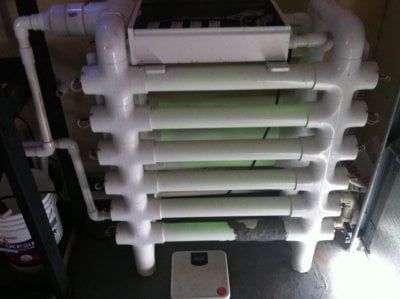Not sure where you got the aqua uv #s but from their own site the 57 watt is at 90,000 µw/cm2 (EOL) GPH: 1,066 meaning to get 180,000 it would be at 533gph it appears this is calculated with 100% bulb strength. Many brands use 80-90% for the calculation.
The biggest difference between brand ratings is if their flow rate is based on 100% 90% or 80% bulb effectivness.
The biggest difference between brand ratings is if their flow rate is based on 100% 90% or 80% bulb effectivness.






















